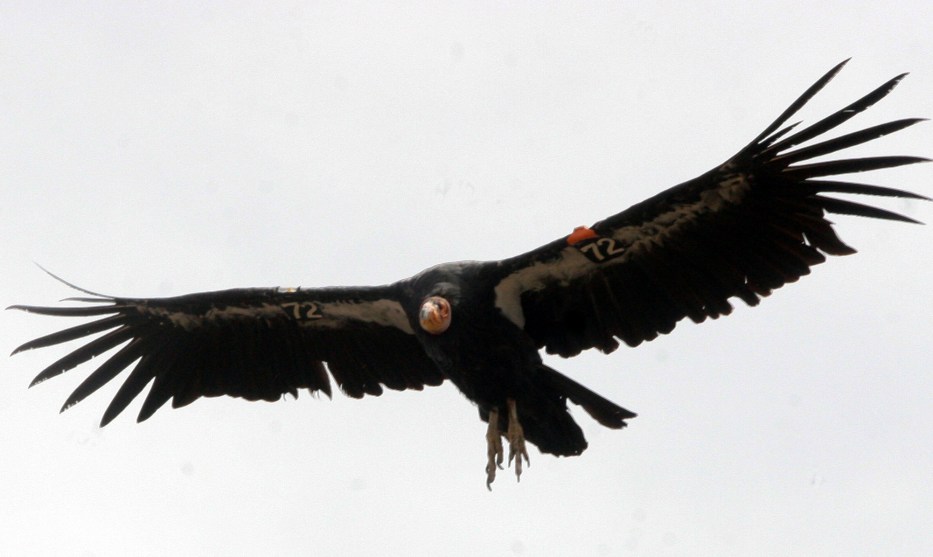
Barry Sweet/ZUMA Wire
Almost a decade ago I spent a wonderful afternoon hiking in Pinnacles National Park in central California, which had recently been redesignated after more than a century as a national monument. Pinnacles, as I came to learn, was known for two things: its eponymous rock formations, and the extremely endangered California condors that hovered over them.
My understanding since I was a kid—which is when you learn most of what you will ever learn about animals—had been that there were like five California condors left and that they lived in some rocky equivalent of an ICU, monitored by teams of condorologists. According to the California Department of Fish and Wildlife, I was more or less correct—the year I was born, the last wild California condor was captured and put in a zoo, and teams of biologists began raising condor chicks in captivity and working to reintroduce the birds back into their natural environment. Condors were first reintroduced to Pinnacles back in 2003.
The chance to see them was a great thrill. After my visit, I spent several years telling people that I had gone to Pinnacles National Park and seen real California condors. Then eventually I learned that California condors have a nine-and-a-half-foot wingspan and that what I most likely saw that day were regular vultures. They’re still very cool—literally, they defecate on their legs to lower their body temperatures. But they’re not being brought back to life in zoos. You can find them just hanging out in parking lots sometimes.
Why am I mentioning all of this? Because this week, the California condor recovery project just hit another major milestone: Two condors were reintroduced to the forests of Northern California on Tuesday, as part of a joint effort by the Yurok Tribe and Redwoods National and State Parks. Tiana Williams-Claussen, a Yurok tribal biologist, explained the significance of the reintroduction of the condor, known as Prey-go-neesh, to the region in an essay this spring for Living Bird magazine:
The last documented condor in our region was killed at the turn of the 20th century. Prey-go-neesh is of deep cultural importance to many tribes throughout California and the Pacific Northwest. For the Yurok, this is due to his relationship with world renewal and our reason for being. Many families, my own included, taught that the condor was a sacred creature, not to be harmed. Prey-go-neesh was amongst the first spirits of the world, and helped teach us how to establish and maintain balance, and to live in a good way. Considered a kind-hearted spirit, and one of renewal, he helped establish our world-renewal ceremonies, providing a song and a prayer that we continue to sing today, and carrying our prayers to the heavens when asking for the world to be in balance. Any condor feathers that we received, which we use in our regalia and which carry the spirit of Prey-go-neesh, were considered gifts. The loss of Prey-go-neesh was devastating.
The introduction of the condors this week was only a beginning, but it’s a huge step, one that means a lot to a lot of people, and that a lot of work has gone into making happen. I’m fired up just reading about it. You can watch a livestream of the condors in their new home if you want; as I type this, they’re eating lunch.














